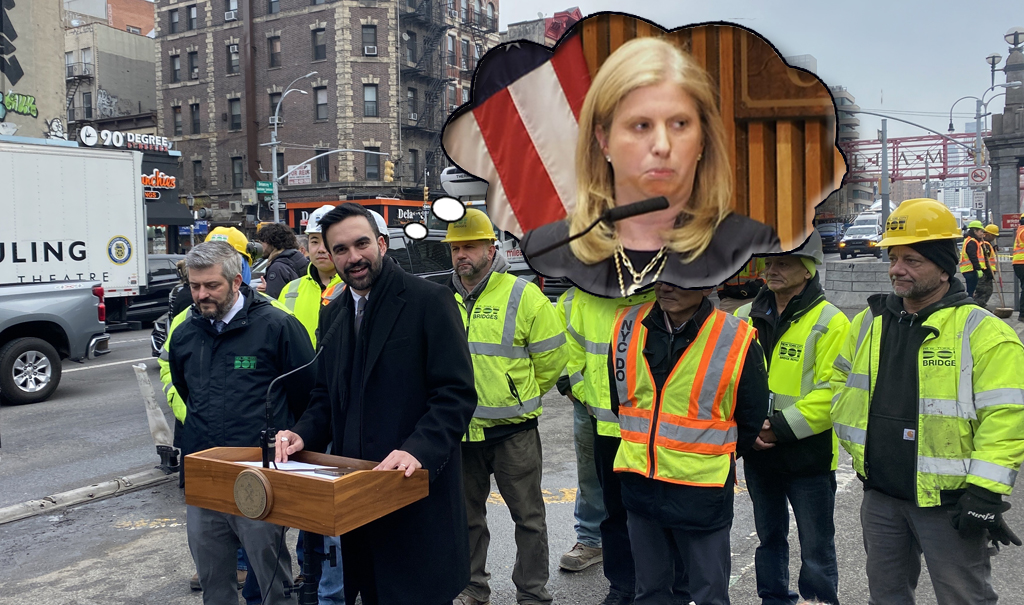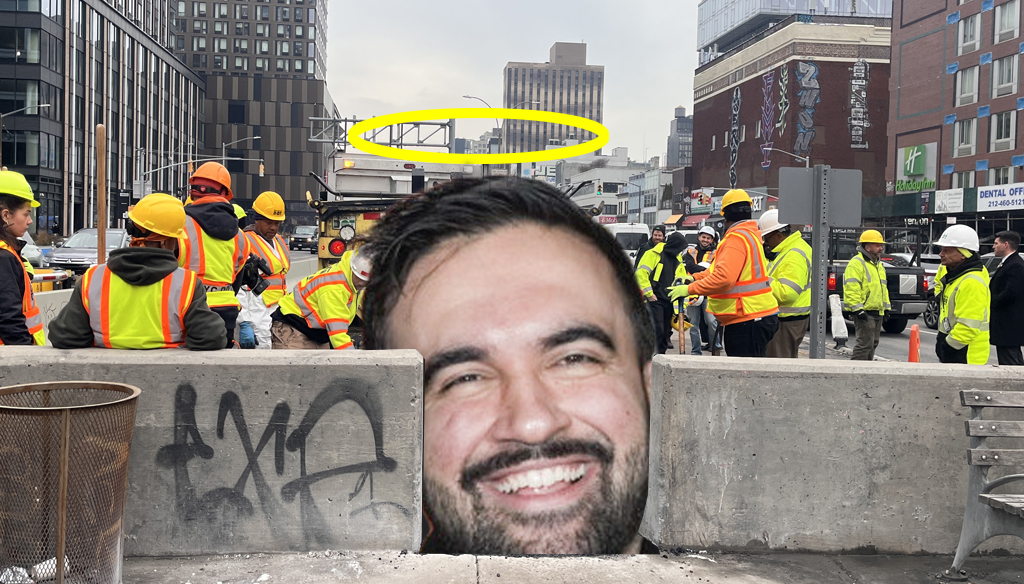Last Saturday, the Daily News reported that a man was critically injured when he was struck by a Range Rover on 14th Street at Eighth Avenue Friday evening at around 6 p.m. The out-of-control SUV went on to strike several cars before coming to rest on its side.
 Another motorist falls prey to the urban jaywalker. Photo: James Poling
Another motorist falls prey to the urban jaywalker. Photo: James PolingThough one witness told the Daily News that the driver -- initially identified as "Alan Naman of Chelsea" before that information disappeared from the web version of the story -- "had to be doing 60" miles per hour down 14th Street, the article took pains to point out that the unidentified victim was "jaywalking." Hence the headline "Jaywalker clings to life after being hit by SUV in Manhattan," rather than, as suggested by Streetsblog reader Eric McClure yesterday, "Jaywalker clings to life after being hit by speeding SUV."
All together now: The driver was not charged.
In all fairness, the reporters and editors at the News were probably making an effort to present both sides of the story by even mentioning the vehicle's alleged rate of travel -- as if (also allegedly) crossing the street outside of a marked crosswalk were an offense on par with driving a 5,000-pound vehicle at highway speeds through a pedestrian populated urban environment. But the bias, intended or not, is revealed in the term "jaywalker" itself.
Care of the Chicago urbanist blog west north, an excerpt from Peter D. Norton’s 2008 book "Fighting Traffic" offers a lesson in early 20th-century etymology.
A ‘jay’ was a hayseed, out of place in the city; a jaywalker was someone who did not know how to walk in a city. Originally the term applied as much or more to pedestrians who obstructed the path of other pedestrians — by failing, for example, to keep to the right on the sidewalk. As autos grew common on city streets, jaywalkers were more often pedestrians oblivious to the danger of city motor traffic… ‘Jaywalker’ carried the sting of ridicule, and many objected to branding independent-minded pedestrians with the term. In 1915 New York’s police commissioner, Arthur Woods, attempted to use it to describe anyone who crossed the street at mid-block. The New York Times objected, calling the word ‘highly opprobrious’ and ‘a truly shocking name.’ Any attempt to arrest pedestrians would be ’silly and intolerable.’
The cleverest anti-jaywalking publicity effort was in Detroit in 1922, where the Packard Motor Car Company exploited the new fashion for monuments to traffic fatalities. Packard built an oversized imitation tombstone that closely resembled the monument to the innocent child victims of accidents in Baltimore. But Packard’s tombstone redirected blame to the victims. It was marked ‘Erected to the Memory of Mr. J. Walker: He Stepped from the Curb Without Looking.’
A St. Louisan, defending pedestrians’ traditional rights to the street, tried to turn the ‘jaywalking’ label against those who promoted it. ‘We hear the shameful complaint of jay walkers, to console jay drivers,’ he wrote. ‘It is the self-conceited individual who thinks people are cattle and run upon them tooting a horn.’ ‘Make every machine stop and wait,’ he demanded, ‘until the road is clear, and give precedent to people who are walking. The streets belong to the people and not to any one class, and we have an equal right, in fact more right than the automobile.’ But promoters of the epithet ‘jay driver’ failed.
In 1920, when the wave of public safety campaigns was just beginning, ‘jaywalker’ was a rare and controversial term. Safety weeks, more than anything else, introduced the word to the millions. Frequent use wore down its sharp edge, and it passed into acceptable usage as a term for lawless pedestrians who would not concede their old rights to the streets, even in the dawning motor age.
And so, thanks in part to the burgeoning auto industry, walking outside the lines became a transgression punishable by injury or death, with little or no commensurate responsibility assigned to those doing the injuring and killing.
Almost as an afterthought, the News reported in the same story that an
elderly man, again unidentified, was struck dead by a taxi driver on Sixth Avenue near
57th Street Friday night. His crime? "Crossing against the light."
"I was driving up Sixth Ave. and the next thing I know he was lying onmy windshield," said driver Mohammad Islam, 27, who was not charged.





